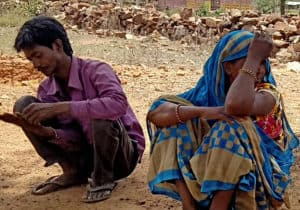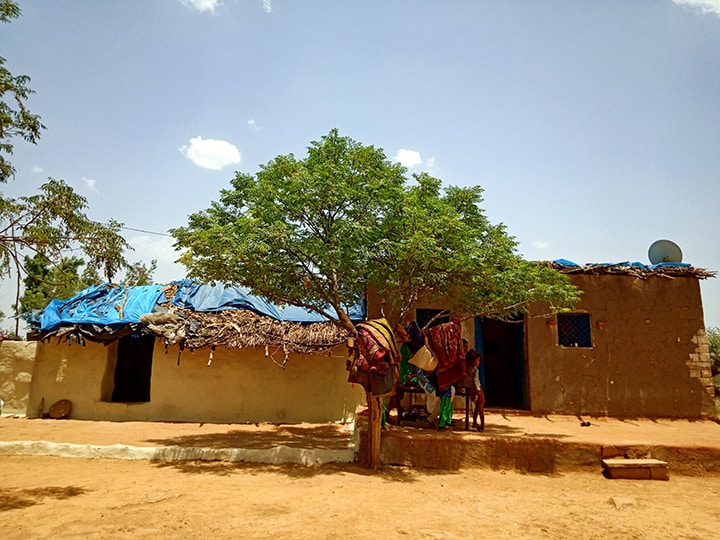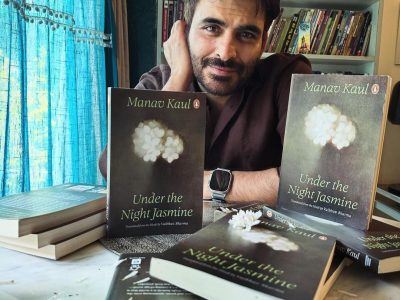The Covid-19 crisis has added to the woes of the poor in rural India. Their pitiable condition shows the failure of policy implementation on the ground
It was raining outside in Kunwarpur village of Shivpuri district while Barso was preparing an afternoon meal for her family. Her husband Puroshottam Kushwah just returned from a farm in which he is a bataidar (sharecropper). Even during the lockdown, the family routine did not change — the husband would go out, return at this hour, then rest his tired body. The only change is that her two kids — Raju 14, Anil 12 — who are studying in a government school in the village, are home most of the time.
As the monsoon season approached, Puroshottam and his farm owner planned for bohni — sowing of the new crop. It kept him busy, even amid lockdown. “Hum toh kisan admi hai lala, batai se kachu kr kha lete.. ab je Corona hai toh ka kaam toh karno hai” (We are farmers and earning from working in others’ field. The Coronavirus is there but we have to work anyway).
Puroshottam’s income falls under the poverty line. He carries a BPL card but last year bought a second-hand bike — the criteria that can exclude him from getting the benefits of that card. While issuing it, the local administration checks if applicants have a TV, bike or fridge — having these appliances means exclusion.
“Now everyone has a bike, it is a necessity. But that doesn’t mean we are not poor. We have a tiny plot of land. Whatever we earn comes from the labour we are putting in. In cities, BPL card holders have cars. Why do they enjoy the benefit then?” he asks.
The lockdown has added to his woes. The tomatoes that he sowed in his 3-4 bigha land did not fetch even the amount invested. Now he is dependent on the ration his family is getting on subsidised rate from the public distribution system (PDS). His savings have dried up but for Puroshottam, it is nothing new. “It happens almost every year but we survive.”
Barso complains that even those who are well-off in her village have got money to build pucca (solid) houses but she, who has a kutcha house (made of mud) didn’t get the benefit of Pradhan Mantri Awaas Yojna. “We have nothing to spend, if we get ill, not even a pucca house. What should we do? Aren’t we poor?
Barso’s family don’t usually buy fruits, they eat chapatis with vegetables that they grow or take from friends’ farms. They get pulses from PDS or sometimes buy. They are dependent on the state for health and other benefits.
Interestingly, in these villages people avoid calling themselves poor (except tribal villages). They do want government benefits but declaring themselves BPL comes with a caution — detrimental effect on marriage prospects for their offspring.
Therefore, other backward caste families, even when they are poor, avoid declaring themselves as poor. But this attitude is not seen among scheduled caste and scheduled tribes — they happily declare themselves as poor. If a village is not a tribal village, it is tough to find the poor. Many well-off BPL card-holders are taking benefits that the poor deserve, while the ones who are actually poor, suffer.
Ram Singh, a Sahariya adivasi, discussed his inability to avail ration for him due to some fault in his BPL ration card. “I couldn’t get the ration during the whole lockdown and relied on some meagre savings,” he claimed. He said, his monthly spending on his four member family is Rs 1,000-1,200. Now, he has got rations after 2-3 months. Going by international standards, he comes under the category ‘extreme poverty’ as he and his family live on less than $1.90 per capita spending — the criteria defined by the World Bank.

Richard Mahapatra in an article for Down to Earth magazine calls poverty a hereditary burden like caste and religion. He says among the next generation of poor, “the intensity and distress is greater. Also, the new generation is without access or with restricted access to livelihood resources such as land, forest and water.”
The Rangarajan Committee in 2014 said that the poverty line should be (going by per capita expenditure on a daily basis) Rs 32 in rural areas and Rs 47 in urban areas. It added 100 million poor more, as per this new criteria.
Earlier, the Tendulkar Committee identified it as Rs 27 for rural India and Rs 33 for urban India. The Rangarajan committee used some normative criteria that includes adequate nourishment, clothing, house rent, conveyance, education and also behavioural determination of non-food expenses. It also factored in calories, protein, fat required as per ICMR guideline for different age groups and gender.
A 2019 global multidimensional poverty index report by the United Nations that includes indicators like poor health, poor quality of work and the threat of violence along with income, says that 271 million poor have come above the poverty index between 2005-06 to 2015-16.. which seems like an achievement. But the report also says that 361 million people still live in multi-dimensional poverty. The Niti Ayog data suggests poverty since 2018 has increased in as many as 22 states and around 70% of the poor live in rural India — rural India is worst hit. With the Covid-induced crisis, the situation can become worse as many labourers have returned home.
The economic crisis brought by Covid has heated the global debate over poverty as well. Academics are questioning the $1.90 criteria and seriousness of global institutions. Australian academic Philip Alston, UN’s outgoing special rapporteur on extreme poverty in his final report said that the World Bank’s $1.90 line for extreme poverty is misplaced. People earning even above that live in high levels of precarity.
He also said that global organisations are “completely off track” to meet the goal of global eradication of extreme poverty by 2030 — while many more people would become poor with the new shock of Coronavirus making the target unachievable. He blamed the misplaced poverty triumphalism among global institutions for this situation.
It is true that global efforts are just not enough when it comes to alleviating poverty. But in rural India weak policy implementation is also a reason for such a state. The condition has exacerbated after Covid.
(Cover: If a village is not a tribal village, it is tough to find the poor)





